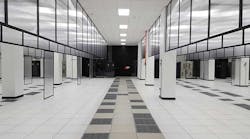Growing the Number of Buildings Where Networks can Exchange Data Traffic
The internet has become a part of daily life for many individuals and most any competitive business in the 21st century. And, naturally, as a result of this shift to the web, the revenue profiles of many businesses have evolved, as well. In other words, more of their revenue is generated through online means. This shift has been enabled by transformation in infrastructure, including software, servers, routers, switches, fiber networks (terrestrial and subsea), cell towers and data center technology, a recent white paper from QTS points out.
Download the full report.
But, the report highlights, their may be one area that has “suffered from a lack of transformation.” That’s how and where the internet networks exchange traffic.
“Very few internet users are on the same network where their desired content ‘lives’. Therefore, data exchange can be difficult,” the report states.
There are two inherent risks in this setup. From a technical perspective, internet networks attempting to exchange traffic with each other or with content networks like Facebook, YouTube and Twitter are at a serious risk if any of these sites have a service degradation or outage, “as there is no survivability,” according to the report.
Taking a look at the situation from a commercial perspective, this concentration of infrastructure can result in a lack of competition in the marketplace for internet and content suppliers.
“Buyers are held hostage in price negotiations and renewal discussions,” QTS reports. “Without competition, enterprises are at the mercy of the provider who owns that building.”
All that said, the report asserts there is a critically important role for the intermediary who enables internet networks and content networks to exchange traffic — the user and the content to connect — enabling data exchange.
QTS believes companies like itself needs to proliferate the number of buildings where internet and content networks can exchange traffic. And in doing so, address the technical issue, “in a neutral and open way,” which also can satisfy the aforementioned commercial issue of stifling competition.
“Internet interconnections are more than simply getting traffic to its end destination.” — QTS
According to the report, more open policies for Internet networks, internet exchanges and content networks can also allow for the easy movement of traffic between networks with a commercial structure.
Projects like the IEIC (Internet Ecosystem Innovation Committee), of which QTS is a member, work to “stimulate transformation, regional economies and internet infrastructure growth globally,” and are designed to deemphasize the heavy reliance of the current concentrated, congested peering points.
Download the new white paper , “QTS Peering and Data Exchange,” courtesy of QTS, to explore how companies can help the industry proliferate the number of buildings where internet and content networks can exchange traffic and do so in a neutral and open way.


